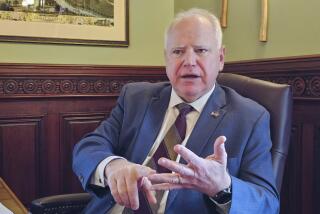New York schools release ‘value added’ teacher rankings
New York City’s Department of Education on Friday released rankings of thousands of teachers based on student test scores, ending a battle that pitted the teachers union against news organizations and parent groups who argued the public’s right to the data outweighed privacy concerns.
“The Department of Education should be ashamed of itself,” Michael Mulgrew, president of New York’s United Federation of Teachers, said in a statement, accusing officials of using “bad tests, a flawed formula and incorrect data to mislead tens of thousands of parents about their children’s teachers.”
Critics of the so-called value-added ranking system, which uses test scores to help determine a teacher’s effectiveness, said it relied on outdated information and on results of standardized tests that can’t be counted on to give a true picture of a child’s grasp of a topic.
The value-added system gained national attention in 2010 when the Los Angeles Times used it to come up with rankings for several thousand teachers in the Los Angeles Unified School District. Those rankings, based on seven years of math and English test scores, were published by The Times, the first time such information had been made public.
New York’s teachers union went to court in 2010 to try to block rankings from being released in the city. But a judge ruled in January 2011 that public interest outweighed teachers’ concerns. “The public has an interest in the job performance of public employees, particularly in the field of education,” Judge Cynthia S. Kern wrote. An appellate court upheld the decision.
In an opinion piece published Friday in New York’s Daily News, the schools chancellor, Dennis Walcott, noted that the rankings being released were based on test scores from the 2007-08 and 2009-10 school years — too old, he said, to ensure reliability.
“They include results for some teachers who don’t even work in our schools anymore,” Walcott wrote. “And many teachers’ performance may have changed over the last two years. So don’t assume that a snapshot from two years ago still holds true today.”
The rankings cover about 18,000 English and math teachers and give value-added scores as well as ratings ranging from “high” to “low,” based on those scores and other factors. The Department of Education began using the value-added system to evaluate teachers in 2008 but agreed not to release the information to the public.
The rankings cover less than a quarter of the 75,000 teachers in New York’s public schools system, the nation’s largest.
More to Read
Sign up for Essential California
The most important California stories and recommendations in your inbox every morning.
You may occasionally receive promotional content from the Los Angeles Times.










